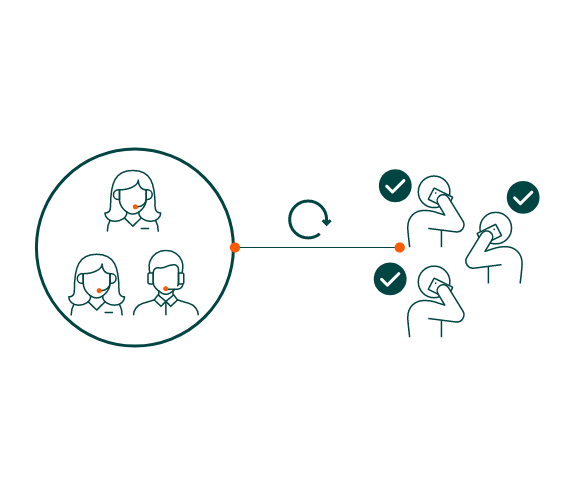The challenge that outbound contact centres face is being able to drive productivity using predictive dialling technology without creating the negative impact of dropped calls.
This is a challenge that Noetica has addressed with our innovative SNoDrop Predictive Dialling solution that drives the highest level of efficiency in outbound contact centres while virtually eradicating the possibility of a call being dropped.

Why traditional predictive diallers drop calls
The fundamental operating principle of a predictive dialler is that it over-dials in relation to the number of agents to ensure that it can create a consistent level of answered calls that can be connected to the outbound team.
Regardless of how good the predictive dialling algorithm is (and some are better than others) it is inevitable that there will be instances where a higher-than-expected answer rate is achieved and there are simply not enough agents to handle these calls – hence calls are being dropped.
Not only are industry bodies such as OFCOM in the UK and the FCC in the USA advocating that organisations should not be dropping calls, but the brand and reputation damage suffered by those organisations which continue to do so is significant.

How does Noetica achieve no dropped calls
This is an industry-wide issue that Noetica has been uniquely addressing for many years now, combining our innovative solutions together to create SNoDrop, a way to effectively leverage predictive dialling while virtually eliminating the possibility of a dropped call.
By utilising our market-leading predictive dialler alongside our call blending solution we are able to maximise productivity on outbound campaigns without dropping calls. We do this by having a core outbound team being served by the dialler and then a secondary team of blended agents that are able to receive the overflow of connected calls avoiding the need to drop any call.

Maximum productivity minimum annoyance
With traditional predictive diallers the approach has been to reduce the pace of the dialler to such a level that minimises drop calls, however, this negates the productivity benefits of using a predictive dialler.
By leveraging our SNoDrop approach to predictive dialling, you are able to maximise the pace of the dialler to drive the greatest levels of productivity, while ensuring responsible dialling, virtually eradicating the possibility of a dropped call and avoiding annoyance.
The benefits of SNoDrop predictive dialling

Maximise outbound productivity
With the ability to maximise the pace of your dialler against campaign objectives while still dialling responsibly.

Alignment with best practice
Ensuring that you are following the best practice defined by regulatory bodies such as OFCOM and FCC in relation to dropped calls.

Improved customer experience
By ensuring that every time you call them, they are not only connected to an agent, but the most appropriately skilled agent.
Your questions answered:
Why do traditional predictive diallers drop calls?
Quite simply, traditional predictive diallers are designed to over dial based on the principle that only a ‘predicted’ proportion of dials will be answered. It is inevitable that in some instances more calls will be answered than there are agents available and in those cases calls are unavoidably dropped.
How to stop dropped calls from a predictive dialler?
By utilising Noetica’s innovative SNoDrop solution, it is possible to drive high performance predictive dialling while ensuring no dropped calls through intelligently blending resources.
What are the rules on dropped calls from a dialler?
Both OFCOM and the FCC continue to issue tighter rules about the use of predictive diallers in relation to dropped calls and the use of answer machine detection causing silent calls – both of these challenges can be addressed by Noetica predictive dialling solutions.
Want to learn more about SNoDrop predictive dialling
If you would like to learn more about our SNoDrop solution and see the benchmark data we have from our users, then simply reach out to our team.
